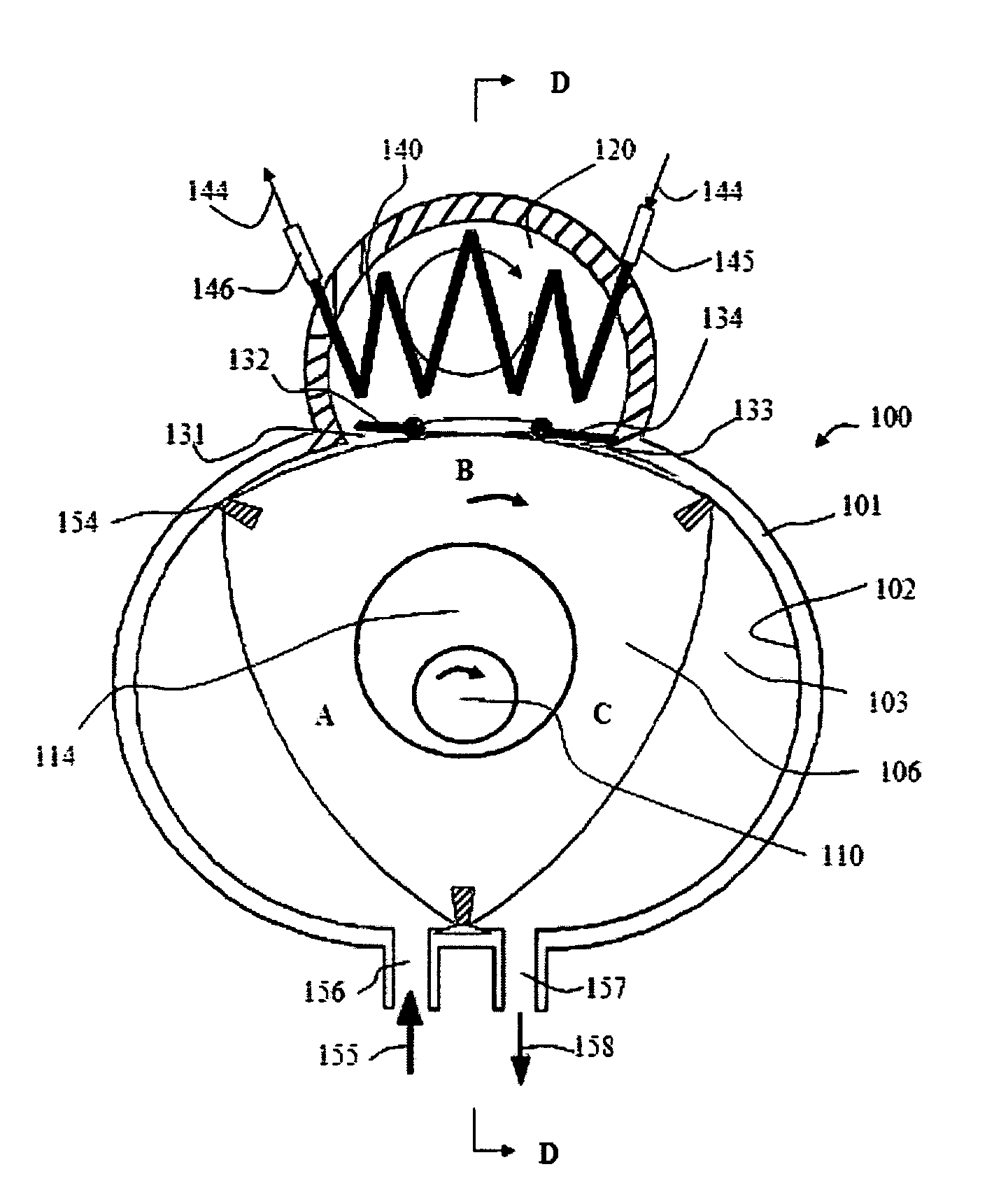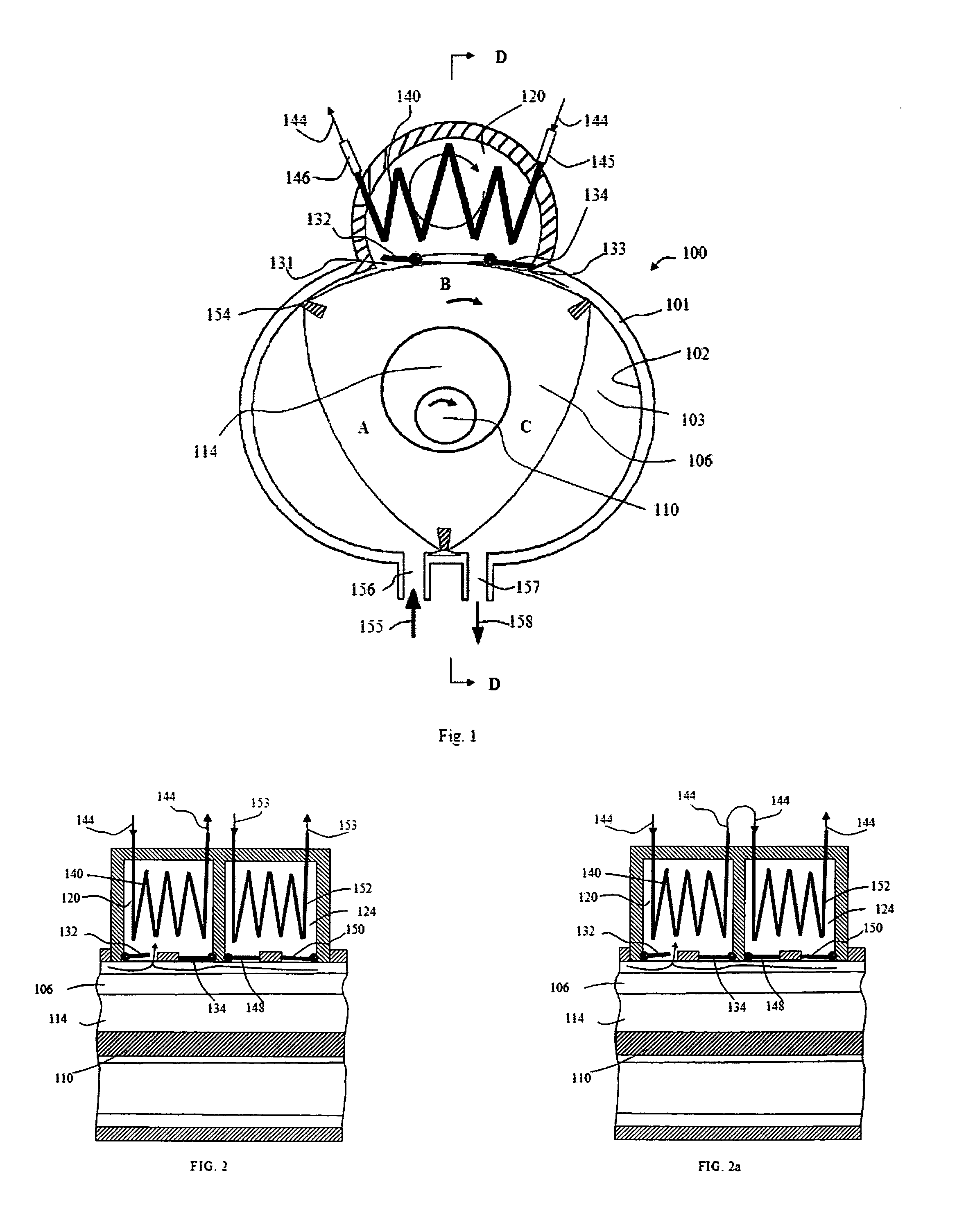Cao heat engine and refrigerator
a heat engine and refrigerator technology, applied in the field of heat engines, can solve the problems of heat engine serous dilemma, heat engine may have a larger size and lower mean effective pressure, and heat engine may have a large size, etc., and achieves the effect of increasing heat transfer duration, large power output, and increasing heat transfer duration
- Summary
- Abstract
- Description
- Claims
- Application Information
AI Technical Summary
Benefits of technology
Problems solved by technology
Method used
Image
Examples
Embodiment Construction
[0060]A rotary engine is an engine that may reproduce thermodynamic cycles of a piston-type combustion engine using a rotor instead of a reciprocating piston. One of the most well known rotary engines in use today is the Wankel-type rotary engine or Mazda rotary engine. The Wankel engine may reproduce the four strokes of the Otto engine or diesel engine using a triangular-like rotor moving around a nearly elliptical (epitrochoid) stationary housing. The combination of the eccentric shaft and “timing” gears causes the rotor to move around the housing with the three tips of the rotor being kept in contact with the side of the housing. The path that the rotor tips follow forms three separate working chambers between the three working faces of the rotor and the side of housing, whose volumes are constantly changing. Each of the three working chambers associated with a respective working face of the rotor may undergo a cycle including an intake stroke (or intake stage), a compression str...
PUM
 Login to View More
Login to View More Abstract
Description
Claims
Application Information
 Login to View More
Login to View More - R&D
- Intellectual Property
- Life Sciences
- Materials
- Tech Scout
- Unparalleled Data Quality
- Higher Quality Content
- 60% Fewer Hallucinations
Browse by: Latest US Patents, China's latest patents, Technical Efficacy Thesaurus, Application Domain, Technology Topic, Popular Technical Reports.
© 2025 PatSnap. All rights reserved.Legal|Privacy policy|Modern Slavery Act Transparency Statement|Sitemap|About US| Contact US: help@patsnap.com



